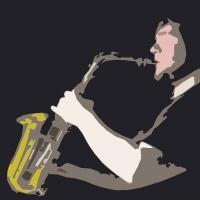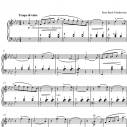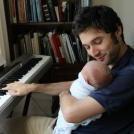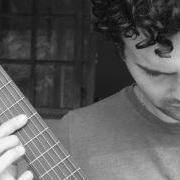Search the Community
Showing results for tags 'piano', 'sonata', 'solo' or 'alevel'.
-
Dear Friends, Can you check out my new song and give some feedback? Thanks. Listen_to_my_last_cry.mp3
-
1º Bagatelle.mid 2º Bagatelle.mid 3º Bagatelle.mid
-
Here's a link to my piece: https://soundcloud.com/user-659082399-303084762/largo-ostinato I appreciate feedback. Technically what's happening: The piece is in 5/4, which gives space to the melodic lines, key of E flat, playing with G natural and flat. It starts with piano ostinato, adds a cello ostinato, successively adds 2 melodies and then combines the 2 melodies over the ostinatos. I created it using mixcraft pro studio 8 virtual instruments. Feedback on another website was to the effect that real strings on long notes have more dynamics. Do you agree or do you think the more flat, even strings works better?
-
Hello Everyone, I have written a short piano piece, Romance today, for a lady I love. Any comments are welcomed! Thank you. HoYin
-
This is my piece Steps to Follow. It is based off of a percussion piece that I found a while back called "Fractalia" by Owen Clayton Condon. I really like the echo pattern that he established in that piece, so I decided to play around with it and make a piano peice based off of it. I personally enjoy the sound of it and like how it turned out, but I am always looking for feedback/criticism, so please let me know what you think. Thanks 🙂 Note: The score is kind of a mess lol. At the time of finishing/uploading this it is really late, and I just could not bring myself to clean it up or try to fight Sibelius over organizing it.
-
This is a new song in conjunction to the my other one called After The End. After The End received honorable mentions in the nation music educators association electronic composition contest. Listen to this and tell me what you think. Follow me on Instagram @wind_player1 and on Facebook as Cj Rhen. Thank You Listen to Before The Dawn by Cj Rhen #np on #SoundCloud
- 1 reply
-
- piano
- soundtrack
- (and 4 more)
-
A year ago, I arranged the Divine Beast Vah Ruta battle theme from Zelda: Breath of the Wild for piano, by ear. This was my first major arrangement of a piece for piano. Here is the original: And here's my arrangement of the theme: And here's the score (yes, I know that some parts need to be moved around; this is not the final version of the sheet music): Copy of Zelda Breath of the Wild_ Divine Beast Vah Ruta.pdf I know the chords aren't exactly the same --- this was intentional, as I preferred certain chord progressions to the ones chosen by the original composer (like in measures 18-19). The feedback I've gotten so far is basically that the harmonies and arpeggios sound pleasant, but that it would be difficult (if not impossible) to play using two hands. I tried playing it on my keyboard, and yeah, I can attest to that. I'm also aware that the dynamics are kinda weird; I tried to do the best I could to get it to sound the way it sounded in my head. Does anyone have advice on how to make this more playable? Because I don't exactly want to get rid of any of the extra embellishments I added. Should I make it even more complex and make it for four hands, or remove parts to make it for two hands?
- 2 replies
-
- video games
- zelda
-
(and 2 more)
Tagged with:
-
Hi, this is my piece Lost in the City. This is the first full original composition that I have ever written. I know it is not the most complicated thing out there as I am just a junior in high school, and I have no formal training in music composition whatsoever. So I basically just write down the ideas that come to mind, and this is really the only one that I have developed in to a full piece. However, I would still like constructive feedback on it and know what you guys think. Also, the score is not the cleanest at the moment. There are definitely some errors especially with the piano pedaling. Thanks 🙂
-
Just a short background: Arpeggia is the title of a piece I composed way back 2010 when I was still new to composing. In fact, this Arpeggia in A minor was the first piano composition I shared in this forum in March, 2010. The original post was actually still in the archives of this site, but I can no longer access the music file. Anyway, fast forward 8 years later, I decided to revisit the piece and edit it to a more "playable" form; but my edits are very minor because I want to preserve as much of the original version possible. So here it is, Arpeggia in A minor. Perhaps I derived the title from the word arpeggio, and I could still remember how fascinated I was with arpeggios at the time this was composed. Hope you guys enjoy one of my first compositions! I also wanna know your thoughts on my old style of composing (I believe my style has changed through the years. This was almost completely different from my latest ones haha!) 😁
-
Another re-post 😊 It was a rather stormy weather of May, 2011. I remember I wrote this piece out of boredom because I can't go outdoors to do some gardening. (actually the original title of this piece was Song of Boredom 😂 and it stayed that way until sometime a month later in June when I decided to change it to Rain). While writing the piece, I kept on looking at the window. The rain was a bit gentle that time, and I felt relaxed. After typing in a few notes, the rain got stronger and stronger. Then a few hours later, everything went silent. I guess that explains the structure of the piece? Even today I'm still wondering where I got those "happy" tunes from a rather stormy inspiration 🤣 Hope you guys enjoy this! I'll keep on looking for old compositions that I can re-post here 😊
-
Hi fellas, Normally, I only write music for piano. It’s the only instrument I have and the only instrument I can play - but recently I have decided it would be fun to take on the project of writing a Piano Quintet to help introduce me to the world of Chamber music. Unfortunately, as I have established, I have no experience writing for stringed instruments and I have no idea how to approach the task. If there are any tips and tricks anybody could give me about writing for strings and for writing chamber music. Thanks a million! James
-
This piece is made up mostly of old material that I came up with 5+ years ago but never did anything with. I have worked on this since mid-April. The title... I guess I probably shouldn't have called this a symphony, but I did anyway. This is an ode to college. For the past three years, I have attended Harrisburg Area Community College, majoring in Computer Networking Technology. I have had ups and downs, including countless moments of uncertainty and procrastination. I recall thinking several times, "Should I change my major?" and "Am I wasting my time?" In fact, right up until the end, I wasn't even sure if I was going to graduate at all. But I did. And so, this piece is intended to reflect my college experience. This piece is organized in a similar way to my other two "symphonies," and has the same instruments with the addition of a drumset. This piece was created in Musescore 2 using the Compifont Soundfont and the GeneralUser Soundfont. It lasts almost a half hour. The first movement is exuberant and jazzy. The second movement is panicky, uncertain, and contemplative. The third movement is recuperative and celebratory; it is also mostly the first movement backwards.
- 3 replies
-
- acoustic bass
- jazz guitar
- (and 9 more)
-
Hi everyone! Just got back to this forum after n years and realized that my old submissions went missing. So I went back to my old compositions and decided to re-upload some of them :) Here's one entitled "Scalar Etude" that I composed in late 2011-early 2012. I made a few changes from the original form, so I guess I'd re-upload it somehow. Hope you enjoy it! All comments and feedback are very welcome :)
-
Hello all! I've been composing for quite some time now, but I'm new to this forum. It seems like a really cool place though. Here's my first Lied I've ever written, a setting of Goethe's Wandrer's Nachtlied. I got a complaint from someone else that the music is "too depressing" for the words, but I disagree with him entirely. What do you guys think? Comments on the music are also encouraged. Thanks in advance. The poem and its translation can be found here: https://en.wikipedia.org/wiki/Wanderer's_Nightsong Also a quick note, the Gb chord in m16 is meant to function as an F# chord going to the B minor section, I just didn't want to use all those accidentals.
-
Not sure if these are even preludes. Not an experienced composer but please do leave feedback as would like to improve.
-
Just finished a guitar track. I think it's in C# Minor - my guitar was tuned in C#. Forget what scale I used. Anyway, it was just something I messed around with. Mainly ideas thrown together over a central melody/rhythm I found on YouTube.
-
Now and then, I go back to Satie, and write some shadow of what his great and inspiring music is. Gymnopédie II.mp3 Gymnopédie II.pdf
- 1 reply
-
- impressionism
- satie-style
-
(and 1 more)
Tagged with:
-
16th grace notes in musecore This is the closest I can get:
-
The dogs’ meat was taken for human use, and Amoraq fed the team with pieces of old summer skin-tents raked out from under the sleeping-bench, and they howled and howled again, and waked to howl hungrily. One could tell by the soap-stone lamps in the huts that famine was near. In good seasons, when blubber was plentiful, the light in the boat-shaped lamps would be two feet high—cheerful, oily, and yellow. Now it was a bare six inches Amoraq carefully pricked down the moss wick, when an unwatched flame brightened for a moment, and the eyes of all the family followed her hand. The horror of famine up there in the great cold is not so much dying, as dying in the dark. All the Inuit dread the dark that presses on them without a break for six months in each year; and when the lamps are low in the houses the minds of people begin to be shaken and confused. But worse was to come. The underfed dogs snapped and growled in the passages, glaring at the cold stars, and snuffing into the bitter wind, night after night. When they stopped howling the silence fell down again as solid and heavy as a snowdrift against a door, and men could hear the beating of their blood in the thin passages of the ear, and the thumping of their own hearts, that sounded as loud as the noise of sorcerers’ drums beaten across the snow. One night Kotuko the dog, who had been unusually sullen in harness, leaped up and pushed his head against Kotuko the boy’s knee. Kotuko patted him, but the dog still pushed blindly forward, fawning. Then Kadlu waked, and gripped the heavy wolf-like head, and stared into the glassy eyes. The dog whimpered and shivered between Kadlu’s knees. The hair rose about his neck, and he growled as though a stranger were at the door; then he barked joyously; and rolled on the ground, and bit at Kotuko’s boot like a puppy. ‘What is it?’ said Kotuko; for he was beginning to be afraid. ‘The sickness,’ Kadlu answered. ‘It is the dog sickness.’ Kotuko the dog lifted his nose and howled and howled again. To learn more about this music, please visit: https://www.senigaglia.com/quiquern-dog-sickness/
-
Hello! I would like to show you my new piece for piano and electronics. I'm waiting for your feedback and hopefully you enjoy it! Self-portrait (piano / electronics) - Antonio García (YouTube link)
- 9 replies
-
- 1
-

-
- neotonalism
- neoclassicism
- (and 5 more)
-
This is a short piano piece that I composed last night while I was playing around on my piano. It is not meant to be complicated or super interesting (not that I am capable of creating anything complicated lol). I was really going for the feeling of background music and something nice to just listen to. Please tell me what you guys think. Thanks 🙂
-
Piece for viola and piano, I wrote this last year after of a meditation practice. It just a long melody who pass for some sound landscapes. I hope you enjoy! Score: https://www.sheetmusicplus.com/title/breve-meditao-digital-sheet-music/20731881?ac=1
-
Hello, I wonder how the sound from 0:00 to 1:00 is produced on the piano. Schnittke uses the term con amplificatore which means with amplifier. It almost sounds like some gamelan instruments. Thanks!
-
This is my new song called "True Colors" and it includes the Roland JP-8080, Korg MS-20, Korg Monopoly, other vsts, and West African Percussion. Follow me on Instagram @wind_player1 to hear more content most important tell me what you think. Thank You!










